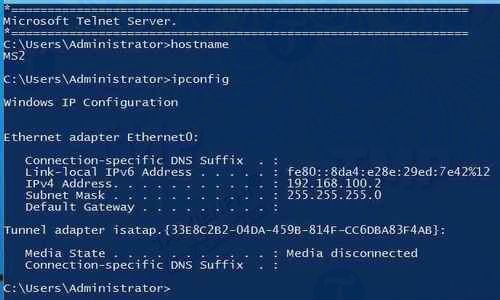
Want to try this yourself? You can find the capture files below: Now you can see everything that has been transmitted between the client and server:Īll client packets are in red, server packets are in blue.

In Wireshark, you can do this by going to Analyze > Follow > TCP Stream:

#Telnet server ip password
If we want to see the username and password in clear text then we have to look at the entire TCP conversation. You can see telnet uses TCP destination port 23. Here is a single telnet packet:Ībove you can see a telnet packet from the client to our server. Let’s take a look at some Wireshark captures of telnet traffic so that you can see this in action. SecurityĪs I explained before, telnet sends everything in plain text so it is not secure. The router now prompts for the username and password. We now have an admin user with a password.

Let’s create a user account: R1(config)# username admin password my_password We need to use the login local command to tell the router/switch to use the local database for authentication.
#Telnet server ip how to
Here’s how to do this: R1(config)# line vty 0 4 Instead of using a single password, it’s also possible to use usernames and passwords that are stored in a local database on the router or switch. Multiple users are able to log in with the same password but it’s easier to see who has accessed your device if you use multiple usernames. Once you see “open” you know that it has successfully established a TCP connection. Let’s see if it works: R2# telnet 192.168.12.1Ībove you can see that I was able to telnet from R2 to R1. The login command tells the router to check for this password. Let’s configure a password: R1(config-line)# password my_password The router will now accept telnet connections but without authentication, it’s not going to work. It is possible to support multiple protocols but let’s configure the router so that it will only support telnet: R1(config-line)# transport input telnet Above you can see that telnet and SSH are two supported protocols. Let’s configure only the first five VTY lines: R1(config)# line vty 0 4 Some smaller boxes will typically have 4 or 16 VTY lines. This router supports more than 900 VTY lines which is a lot. Let’s take a look: R1(config)# line vty 0 ? These are virtual terminal lines that define how many concurrent connections it supports. Specifies the source IPv6 interface type and number on the local device.Your router or switch will have a certain amount of VTY lines. Specifies the IPv6 address of the remote device when the remote Telnet server is of the IPv6 type. If the Telnet port number has been changed on the Telnet server, you must use the same port number to log in to the server through a client. The value is an integer that ranges from 1 to 65535, and the default value is 23. Specifies the TCP port number used by the remote device that functions as the Telnet server. Specifies the IP address of the remote device. If no source address is specified, the system will use the IP address of the outbound interface on the local device to initiate a Telnet connection. Users can use the specified IP address to communicate with the Telnet server to ensure security. Specifies the IP address of the local device. Specifies the name of a VPN instance to which the device belongs. Specifies the source interface type and number on the local device. The following table describes the parameters in this command. For an IPv6 server, run the following command: telnet ipv6 ipv6-address.For an IPv4 server, run the following command: telnet.When a Huawei device functions as a Telnet client, you can run the following commands to log in to the Telnet server: In this case, you can change the port number of the TCP connection on the Telnet server and run the following command to change the Telnet port number: telnet server port port-number If this port is occupied, the connection fails to be set up. telnet server enableįor details, see Configuring a User to Log In Through Telnet in Huawei NE40E Product Documentation.īy default, port 23 is used to set up a connection. Set the service mode for login users to Telnet.Configure the user name and password for login.The Telnet server must be configured with the user name, password, and service mode (Telnet), and the Telnet service needs to be enabled.


 0 kommentar(er)
0 kommentar(er)
